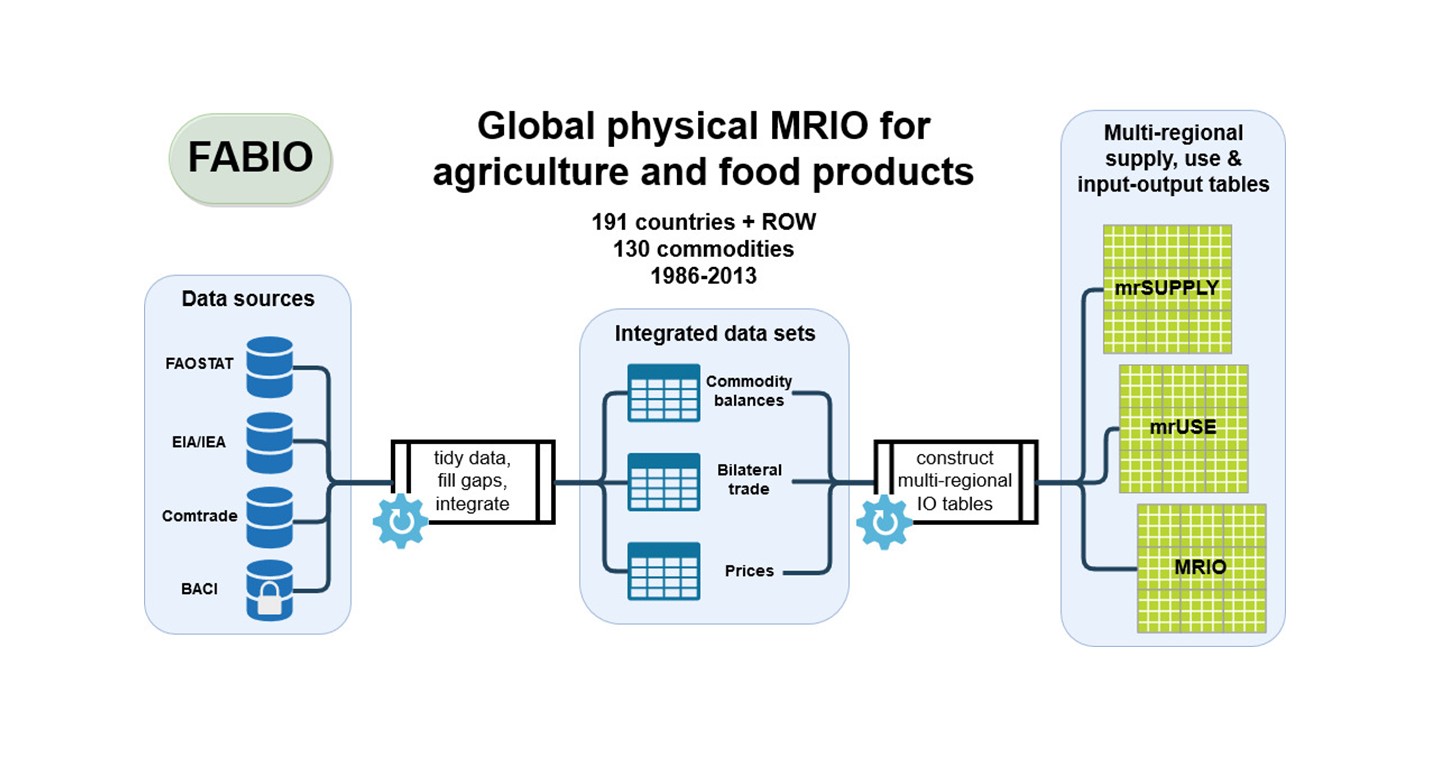Need for detailed and reliable traceability tools
The increasing displacement of environmental impacts from primary production through global trade has become a prominent issue in international policy debates. Traceability tools are needed to support both stakeholders and policy makers in monitoring and governing global trade flows and their undesired impacts. Traceability tools should provide results, which are trustworthy, comprehensive, and detailed enough to be able to guide policy response. We argue that previously developed multi-regional input-output (MRIO) models are often inadequate.
The Food and Agriculture Biomass Input-Output model
In this paper, we present the Food and Agriculture Biomass Input-Output model (FABIO), a global set of multi-regional supply, use and input-output tables in physical units, that document the complex flows of agricultural and food products in the global economy. The model assembles FAOSTAT statistics reporting crop production, trade, and utilization in physical units, supplemented by data on technical and metabolic conversion efficiencies, into a consistent, balanced, input-output framework. FABIO captures detailed supply chain information for 130 agriculture, food and forestry products covering 191 countries and one rest-of-world region from 1986 to 2013. The physical supply-use tables offered by FABIO provide a comprehensive, transparent and flexible structure for organizing data representing flows of materials within metabolic networks. They allow tracing biomass flows and embodied environmental pressures along global supply chains at an unprecedented level of product and country detail and can help to answer a range of questions regarding environment, agriculture, and trade.
Trends in the cropland footprint of China, the EU-28, and the USA
We demonstrate this physical MRIO model applying it to the case of the cropland footprint of China, the EU-28, and the USA. We reveal differences in trends and composition of cropland footprints and import shares over a period of nearly three decades, and highlight the role of allocation when tracing physical flows along processing steps. Modeling the physical dimensions of biomass conversion and distribution networks is essential to understanding the characteristics, drivers and dynamics of the socio-economic biomass metabolism. We expect FABIO to improve the ability of sustainability research and monitoring initiatives to produce more reliable estimates of the environmental footprints of global production and consumption patterns.



